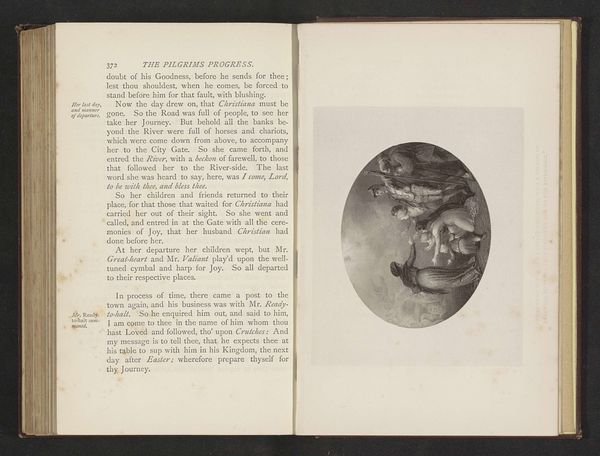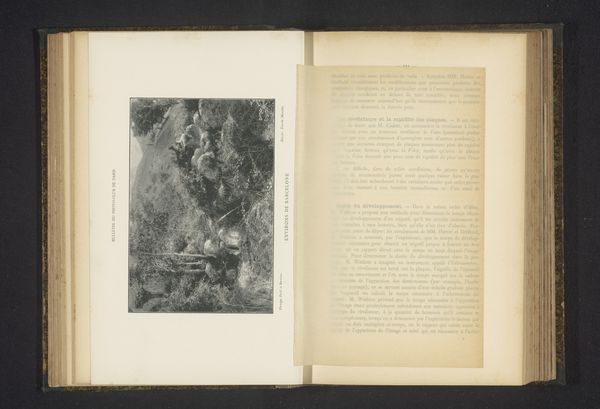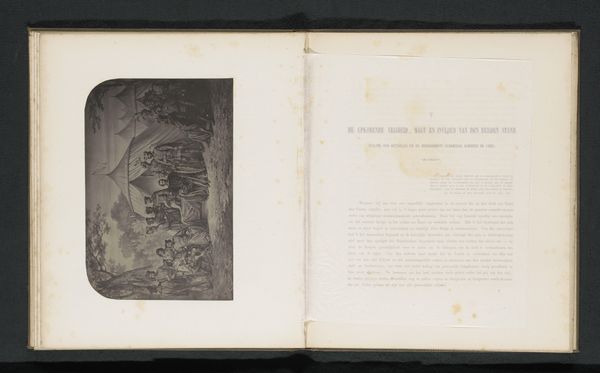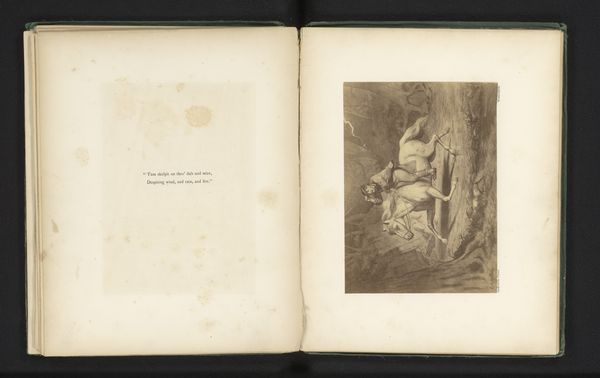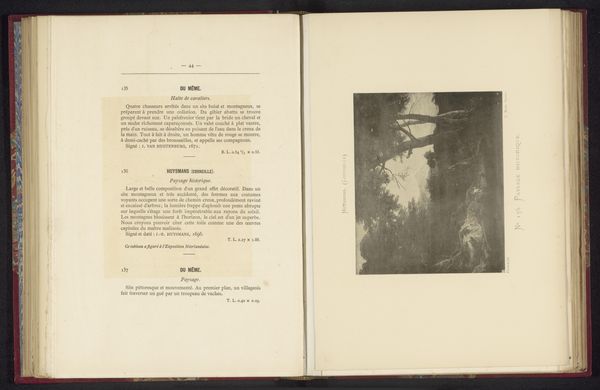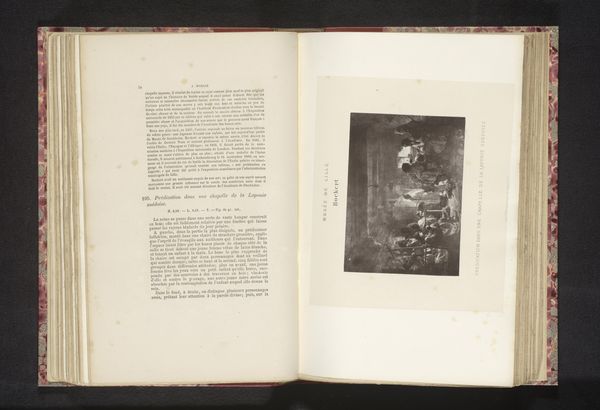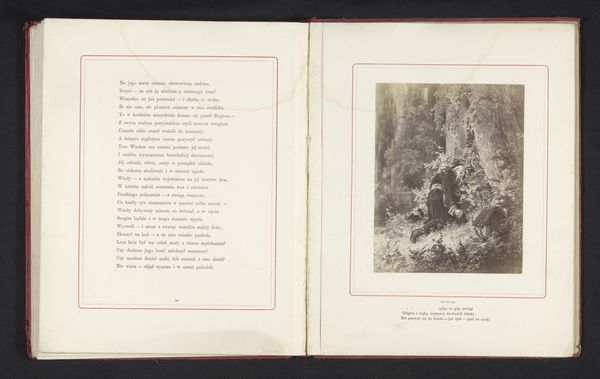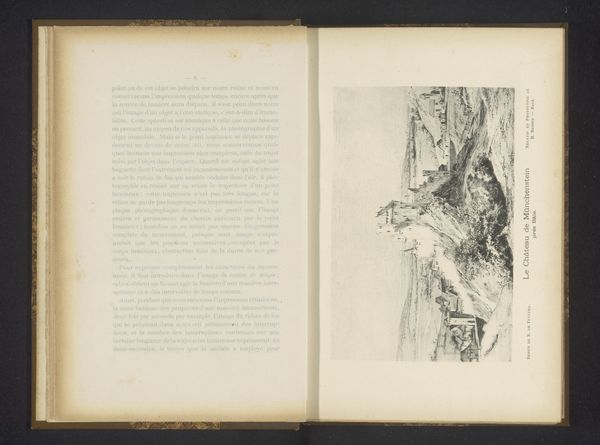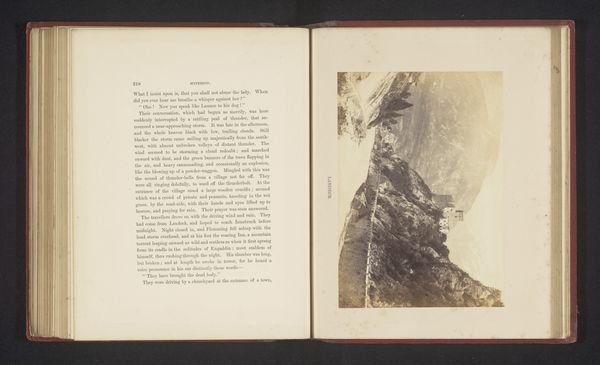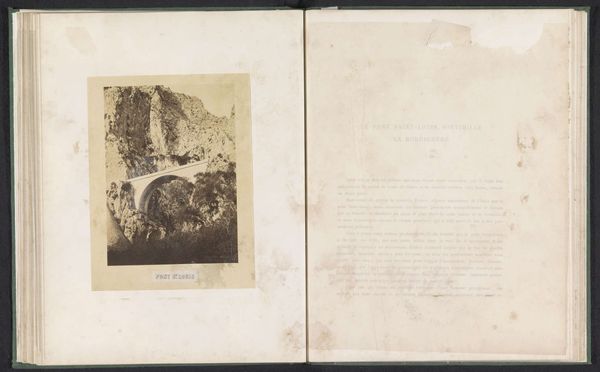
Fotoreproductie van een prent naar een schilderij, voorstellende twee stervende mannen en paarden op een slagveld c. 1850 - 1875
0:00
0:00
Dimensions: height 88 mm, width 137 mm
Copyright: Rijks Museum: Open Domain
Curator: Immediately, I see chaos. This print, a photographic reproduction actually, made sometime between 1850 and 1875, depicts two dying men amidst the ruin of a battlefield, with fallen horses adding to the devastation. It certainly has a romantic sensibility. Editor: It evokes such a powerful sense of loss. Look at how the artist captures the expressions on the men's faces—a blend of agony and resignation. And the horse mirroring their suffering; this piece really knows how to tap into pathos. It serves as a brutal representation of war. Curator: Given the piece’s probable date, one can’t help but wonder if it echoes the sentiments after the Napoleonic Wars or anticipates anxieties leading into later conflicts of the 19th century. History painting and narrative art played a strong role in defining national identity at that time. The piece currently resides within the collection of the Rijksmuseum, an institution deeply implicated in defining Dutchness itself. Editor: Notice how the dying men clutch each other. I can't help but wonder what their connection is and the symbology it may hold. Is it the artist conveying the universal bond of soldiers, or maybe even humanity, amidst bloodshed? Or could this photograph stand as an emblem of death? Curator: The adoption of photography to reproduce a print of a painting seems noteworthy here. Photography granted wider access to historical and romantic paintings for general audiences, even as debates raged about photography’s status as an artform in its own right. Editor: Right, so there are different layers to read within it. Beyond the aesthetic emotion stirred by such art, viewers back then could certainly attach social, political, or religious implications. You see this a lot in war depictions in many cultures. The suffering soldier often embodies collective societal grievances. Curator: Exactly. It invites us to reflect on how conflict transforms individuals into symbols of collective memory, simultaneously unique and representative of greater social traumas. It underscores how war reshapes the fabric of societies. Editor: So, despite its somber subject matter, it's really fascinating how this reproduced print embodies both artistic vision and broader historical contexts—a true intersection of art, history, and human emotion! Curator: Precisely! This seemingly simple photograph encapsulates complex dialogues about art’s role in narrating, shaping, and sometimes even confronting our collective past.
Comments
No comments
Be the first to comment and join the conversation on the ultimate creative platform.

